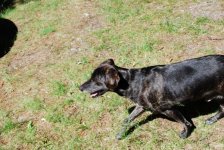I've been thinking about doing something like this, but I'd like to figure out the best practice for choosing the scene and setting a usable baseline - maybe set a couple sheets of white paper in the sun and shade. Otherwise not only do you have the lighting to worry about, but finding a good texture brightness. Then there's the camera settings... if Racer is going to implement auto-exposure, is it better to take one set of photos on auto, one set with fixed exposure?
Do everything with known camera settings, and have the sky in the background.
Ie, f-stop, iso, shutter speed, and if possible, the colour temp, and do a few bracketed shots, or shoot in raw for more dynamic range.
In theory, the colour dis-balance we get (is that a word?) at dawn/dusk is a function of the different sky/sun colours. However, even at dusk, exposing for white balance on a matte object pointing right up, will result in a sphere appearing with an orange tint on one side, and a bluey tint the other, just the vertical will tend towards being neutral (which is just what we want I guess

)
So, in theory, if you white balance at any TOD with a vertical matte object (several sheets of white paper is better so it stops acting with sub-surface scattering/transmission etc), you should still get a good idea of the colours from the sky/sun independently of each other.
You would need to capture these off a matte sphere though.
This is why I have my white/grey/black and chrome balls setup, so I can just white balance on the base (white matte now), and just use my balls as a guide for the colour tint. I can also capture the whole sky in the chrome ball, so we can get an idea of what the sky 'white out' level is like relative to a nicely exposed matte bright white object (ball) in the scene.
Once we start getting an idea of realistic ish values, others will start to drop into place. It's a bit like the pacejka issues 8 years ago before Alpine provided lots of data, it was just shooting in the dark until some real data came along to help us out

I guess the alternative is to try gather absolute colouring info too, and have Racer do the white balance, but I can't see it serving much purpose because we would always want to 'auto' colour balance to white anyway (same with exposure), but I'm not sure what the benefits would be with white balance being done. Ie, it's not as significant as bloom driving out of a dark tunnel. Maybe a cloud uncovering the sun might look a bit more authentic as the colour balance changed with auto-colour balancing?! Hmmmm

The light meter would be really handy as Camsinny mentioned, to get real lux values along side this too. I'm pretty sure a modern DSLR has a meter in it, but how you can see the 'raw' data from it is another thing

Maybe really top-end models have a meter readout (ie, Nikon 1D etc etc)
Dave














